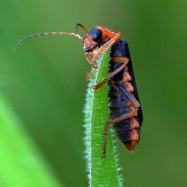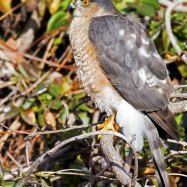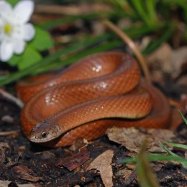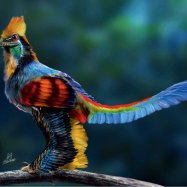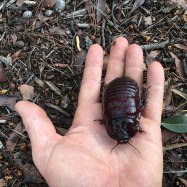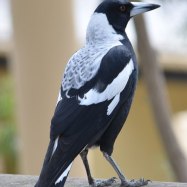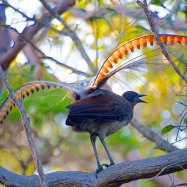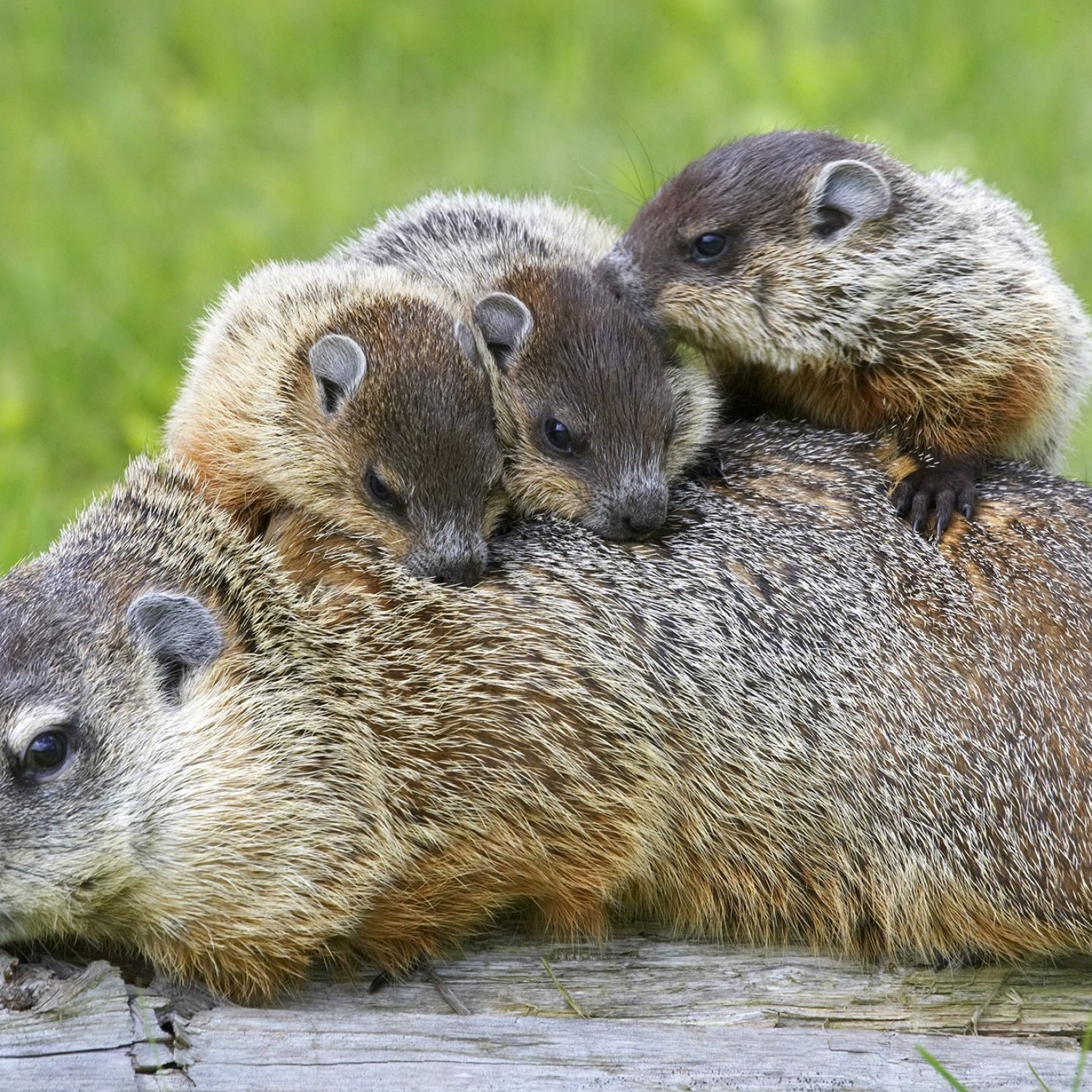
Groundhog
16 to 20 inches (41 to 51 cm)
The groundhog, also known as a woodchuck, is a stocky animal found in the eastern and central United States and Canada. They can grow up to 20 inches and are a part of the Sciuridae family. These adorable animals have become popular for predicting the end of winter every February 2nd. Have you spotted one in your backyard? #GroundhogDay #AnimalFacts #WildlifeWednesday
Animal Details Summary:
Common Name: Groundhog
Kingdom: Animalia
Habitat: Woodlands, fields, and meadows
The Adorable Groundhog: Nature's Weather Forecaster
The groundhog, scientifically known as Marmota monax, is a small mammal belonging to the rodent family. It is more commonly known as a woodchuck or whistle-pig and is native to North America, with the United States being its country of origin. This fascinating creature has been capturing the hearts of people for centuries with its charming appearance and unique behaviors. From its weather-predicting abilities to its important role in the ecosystem, the groundhog is truly an animal worth exploring Groundhog.A Creature of Many Names
The groundhog is also known by many other names, including the woodchuck, whistle-pig, or land-beaver. Its scientific name, Marmota monax, is derived from the Latin word for "large marmot," referring to its close relation to the European marmot. However, the name "groundhog" is the most frequently used and recognized.Classification and Appearance
Classified as a member of the Marmotinae subfamily, the groundhog belongs to the kingdom Animalia, phylum Chordata, and class Mammalia. Its distinct physical features make it easily recognizable from other rodents. The groundhog has a stocky body shape, with a short, bushy tail and short legs. On average, it measures about 16 to 20 inches (41 to 51 cm) in length and weighs between 4 and 14 pounds (1.8 to 6.4 kg) Gourami.The groundhog's fur is thick and coarse, varying in color from dark brown to light brown with a reddish tint. Its belly and feet are usually lighter in color. They have sharp claws, specially adapted for digging tunnels and burrows. This makes them excellent excavators and explains why they are often found in gardens or fields.
Habitat and Distribution
The groundhog's habitat mainly consists of woodlands, fields, and meadows. They are found in eastern and central parts of the United States and Canada, particularly in areas with an adequate food supply and areas with soil that is easy to dig. They prefer areas with short grass and a mixture of open space and vegetation. These creatures are excellent climbers and can be found living in burrows or tree hollows.Herbivorous Diet
The groundhog is classified as herbivorous, meaning that it feeds mainly on plants. Its diet primarily consists of greens, such as grass, clover, alfalfa, and dandelions. Being natural foragers, they eat a wide variety of plants, including crops, berries, and seeds. During the winter months, when food is scarce, they rely on the fat they stored during the summer months to survive.The Groundhog's Role in the Ecosystem
The groundhog plays a vital role in the ecosystem, making it an important animal in the food chain. Their burrowing activities help to aerate the soil, which is beneficial for plant growth. They also serve as a food source for predators such as foxes, coyotes, and feral cats. Their burrowing also creates small tunnels and holes that can be used by other animals during the colder months, providing shelter and protection from harsh weather conditions.In addition to their ecological importance, the groundhog has also become a symbol of cultural significance, being an important part of the tradition of Groundhog Day. According to folklore, if a groundhog comes out of its burrow and sees its shadow on February 2nd, it will retreat back into its burrow, indicating six more weeks of winter. On the other hand, if the groundhog does not see its shadow, it is believed that spring will arrive early. This annual event, which takes place in Punxsutawney, Pennsylvania, has been celebrated for over 100 years, with thousands of people making the journey to witness the predictions of the famous groundhog, Punxsutawney Phil.
The Groundhog's Survival Tactics
Apart from their ability to predict the weather, the groundhog also exhibits interesting behaviors that help them survive in the wild. Being primarily herbivorous, groundhogs do not have any exceptional physical abilities for defense. However, they do possess a few distinctive mechanisms for survival in the face of predators.One of these is their ability to slink back into their deep burrows in record time. They have a strong and agile body, which helps them to dig burrows up to six feet deep. In case of danger, they can quickly escape into their burrows, where they are usually out of reach from predators. They also have a keen sense of smell, which they use to detect potential danger, and can run up to 15 miles (24 km) per hour to escape from predators.
The Groundhog's Hibernation Habit
Another interesting fact about the groundhog is its hibernation habits. As the weather turns cooler, groundhogs go into a state of deep hibernation. They enter their burrows in late fall and remain there until early spring, typically hibernating for four to five months.During this hibernation period, their body temperature drops significantly, and their heartbeat and breathing slow down. They live off their stored body fat, which they accumulated during their active months in the summer. Then, as warm weather arrives, they emerge from their burrows in search of food and mates.
The Groundhog and Humans
Humans and groundhogs have a complex relationship, mainly due to their tendency to dig burrows and forage on crops. As a result, groundhogs are often viewed as agricultural pests. However, they play an essential role in controlling plant growth and promoting soil health, making them a valuable part of the ecosystem.The groundhog has also become a popular animal in folklore, literature, and media. The character of "Punxsutawney Phil" has become synonymous with Groundhog Day celebrations, and there have been numerous movies and cartoons featuring this lovable creature.
One reason for the groundhog's popularity is its cute appearance and charming behaviors. They are generally not shy around humans and can be observed in their natural habitat, making them a popular attraction in many areas. However, it is important to remember that they are wild animals and should not be approached or fed by humans.
In Conclusion
In summary, the groundhog or Marmota monax, is a fascinating creature known for its adorable appearance and unique behaviors. Found in various regions of North America, the groundhog plays an essential role in the ecosystem, helping to control plant growth and providing shelter for other animals.Whether predicting the weather on Groundhog Day or peacefully hibernating in their burrows, the groundhog continues to captivate people's hearts with its charming and charismatic presence. So the next time you see a groundhog in the wild, take a moment to appreciate this fascinating animal and the important role it plays in our ecosystem.

Groundhog
Animal Details Groundhog - Scientific Name: Marmota monax
- Category: Animals G
- Scientific Name: Marmota monax
- Common Name: Groundhog
- Kingdom: Animalia
- Phylum: Chordata
- Class: Mammalia
- Order: Rodentia
- Family: Sciuridae
- Habitat: Woodlands, fields, and meadows
- Feeding Method: Herbivorous
- Geographical Distribution: North America
- Country of Origin: United States
- Location: Eastern and central United States and Canada
- Animal Coloration: Brown with a reddish tint
- Body Shape: Stocky
- Length: 16 to 20 inches (41 to 51 cm)
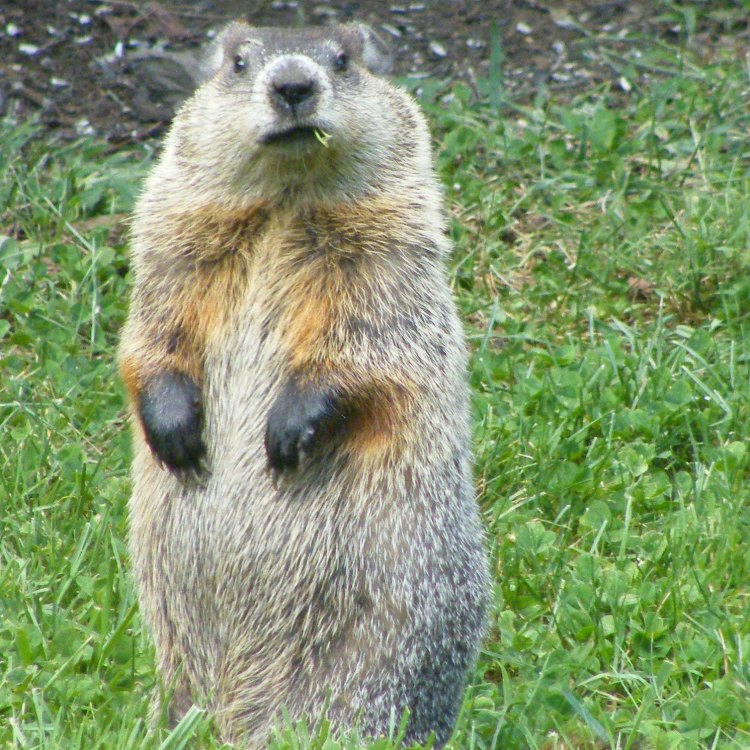
Groundhog
- Adult Size: Weight: 4 to 14 pounds (1.8 to 6.4 kg)
- Average Lifespan: 6 to 8 years in the wild, up to 14 years in captivity
- Reproduction: Sexual
- Reproductive Behavior: Monogamous
- Sound or Call: Whistle
- Migration Pattern: Non-migratory
- Social Groups: Solitary
- Behavior: Ground-dwelling and burrowing
- Threats: Predation, habitat loss
- Conservation Status: Least Concern
- Impact on Ecosystem: Plays a role in soil aeration and plant diversity
- Human Use: Hunted for meat, fur, and considered a pest
- Distinctive Features: Large front teeth and claws, excellent burrowers
- Interesting Facts: Famous for its weather forecasting ability on Groundhog Day
- Predator: Coyotes, foxes, wolves, bobcats, and birds of prey
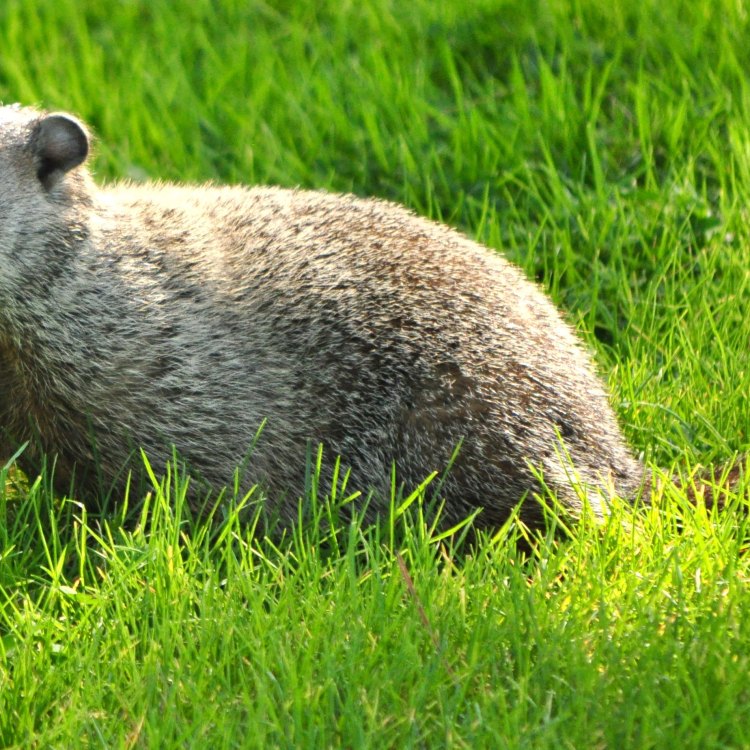
Marmota monax
The Groundhog: A Secretive Rodent and An Indicator of Seasons
The groundhog, also known as a woodchuck, whistle pig, or land beaver, is a common and fascinating creature found in the United States and Canada. This chubby, furry rodent may seem like an ordinary animal at first glance, but it has many unique features and behaviors that make it stand out.From its elusive nature to its role in predicting the arrival of spring, the groundhog has captured the curiosity and interest of people for centuries. In this article, we will dive deep into the world of the groundhog and uncover some interesting facts about this secretive animal PeaceOfAnimals.Com.
A Little About the Groundhog
The groundhog belongs to the family Sciuridae, which includes squirrels, chipmunks, and marmots. They are found in North America, with their range extending from Alaska to Georgia, and from coast to coast. These rodents are commonly found in grassy fields, meadows, open woodlands, and along fences or roadsides, where they can use their sharp claws to dig burrows.Groundhogs are medium-sized rodents, with an average weight of 4 to 14 pounds (1.8 to 6.4 kg) and a body length of 16-24 inches (40-60 cm). They have a stout body covered in thick, grayish-brown fur, with a short and bushy tail. Their most distinctive features are their long front teeth, or incisors, which continue to grow throughout their lifespan to prevent them from wearing down while burrowing and feeding.
Amazing Reproductive Behavior
Like many animals, groundhogs follow a sexual reproduction pattern Gypsy Moth. This means that they have separate sexes, and male and female groundhogs must mate to produce offspring. However, there is one fascinating aspect of their reproductive behavior that sets them apart from other rodents – they are monogamous.Unlike most other rodents that are promiscuous, groundhogs form long-term pair bonds with their mates, and they tend to stay with the same partner for life. This loyal behavior is rare among mammals and makes groundhogs truly unique in the animal kingdom.
A Whistling Groundhog? Whistle Pig!
While groundhogs are not known for vocalizing, they do have a distinctive sound that resembles a whistle. This sound is produced when they feel threatened or are excited and is often used as an alarm call to warn other groundhogs and animals of potential danger.But did you know that the groundhog's scientific name, Marmota monax, actually translates to "marmot who digs"? This name reflects their behavior of whistling from their burrows, earning them the nickname "whistle pig."
A Non-Migratory and Solitary Lifestyle
Unlike many other animals that migrate to different locations in search of food and favorable environments, groundhogs are non-migratory. They prefer to stay in one place and are highly territorial, defending their burrows from intruders.Groundhogs are solitary animals, and they usually live alone, except during the breeding season when they pair up with a mate. They do not form social groups or colonies like other rodent species, such as prairie dogs.
A Ground-Dwelling and Burrowing Species
One of the most remarkable features of groundhogs is their incredible digging ability. These rodents are expert burrowers, and they create complex underground networks of tunnels and chambers for shelter and protection. Groundhogs have strong front legs and sharp claws that they use to excavate their burrows, which can extend up to 66 feet (20 meters) in length.Their burrows often have multiple entrances and exits, allowing them to escape quickly if needed. These burrows also serve as hibernation dens, providing groundhogs with a safe place to sleep through the winter.
Threats to the Groundhog
Despite their remarkable burrowing skills, groundhogs still face threats from predators and habitat loss. Their main predators include coyotes, foxes, wolves, bobcats, and birds of prey such as eagles and hawks. However, these animals can be clever and can evade predators by quickly retreating into their burrows.Habitat loss due to human development, agriculture, and deforestation also poses a significant threat to groundhog populations. As they rely on open grassy areas for food and burrowing, the loss of these habitats can be detrimental to their survival.
Conservation Status: Least Concern
The good news is that despite these threats, groundhog populations are currently not of concern. They are listed as "Least Concern" on the International Union for Conservation of Nature's (IUCN) Red List, which means they are not facing any significant risk of extinction.However, it is important to note that this status does not mean we should ignore the potential impacts of habitat loss and other threats on groundhog populations. As with any species, it is essential to maintain healthy and balanced ecosystems to ensure their survival.
The Groundhog's Role in the Ecosystem
Aside from being a cute and interesting creature, the groundhog also plays a significant role in the ecosystem. As mentioned earlier, they are expert burrowers, and their digging behavior has a positive impact on the environment.Their burrowing creates tunnels that serve as natural drainage systems, helping to prevent flooding. These tunnels also promote soil aeration, which improves soil quality and allows for better water and nutrient absorption. Furthermore, the groundhog is essential to plant diversity, as their burrowing helps to disperse seeds and dig up new areas for plants to grow.
Human Use and Perceptions of Groundhogs
Groundhogs have long been viewed as pests by farmers and gardeners due to their burrowing habits, which can damage crops and gardens. As a result, some people have resorted to hunting groundhogs for meat and fur, exacerbating the decline of their populations in some regions. However, it is essential to remember that groundhogs play a valuable role in the ecosystem, and their presence should not be taken for granted.Interestingly, groundhogs have also gained popularity due to their role in the tradition of Groundhog Day, which takes place on February 2nd each year. According to this tradition, if a groundhog emerges from its burrow on this day and sees its shadow, it will become scared and run back inside, predicting six more weeks of winter. However, if it does not see its shadow, it will stay outside, predicting an early spring. This tradition has been around since the 1800's, and crowds gather in Punxsutawney, Pennsylvania, to witness the "prediction" made by Punxsutawney Phil, the famous groundhog.
In Conclusion
From its reproductive behavior and distinctive whistling call to its burrowing skills and role in predicting the arrival of spring, the groundhog is an intriguing and unique creature with many fascinating features. While it may be an ordinary sight for those living in North America, its secretive nature and interesting behaviors make it an exciting animal to learn about. It is a reminder that even the most commonplace animals are full of surprises, and it is our duty to protect and preserve them in their natural habitats. So the next time you see a groundhog, take a moment to appreciate the amazing creature that it is.
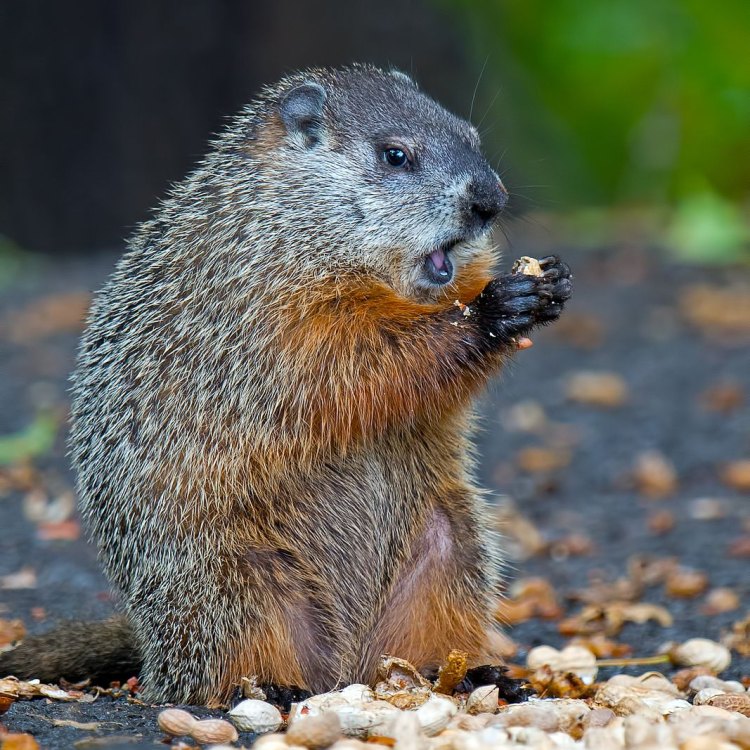
The Adorable Groundhog: Nature's Weather Forecaster
Disclaimer: The content provided is for informational purposes only. We cannot guarantee the accuracy of the information on this page 100%. All information provided here may change without prior notice.

